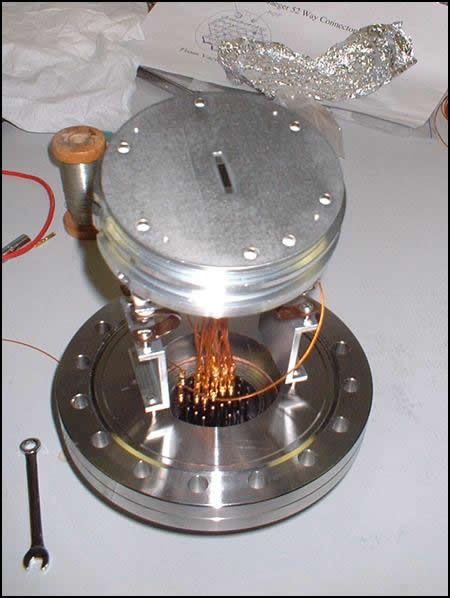Detector Design
The Charge Detector Array is designed to operate in vacuum. The MCP stage requires a reasonable quality vacuum in order to operate properly and the surface science experiments which provide the application for the array require ultra-high-vacuum (UHV).

Module assembly ready for fitting to a VG Thermo CLAM4 Electron Energy Analyser
The custom ASIC is mounted on a ceramic substrate, which forms the support for the circuit and also the mounting for the microchannel plates.
The ceramic module containing the ASIC and the MCPs is then mounted on a mechanical jig to hold it at the correct place at the focal plane of the analyser. A multi-way feedthrough is included in the mechanical jig to take the signal and control wires for the detector through the vacuum envelope.The design of the mechanical assembly is due to Dave Teehan at Daresbury Laboratory.
The charge detector array is controlled by means of a stand-alone controller outside the vacuum envelope.

Because of the potentials involved in the analyser and also the need to supply 2kV to the microchannel plates, the control electronics must be able to float at up to 3kV from ground potential. In order to achieve this the controller is designed to act as an internet node, communicating via TCP/IP, and connected to the rest of the computer network with a fibre-optic ethernet.
The controller includes control of the microchannel plate power and bias supplies as well as supply of control voltages to the detector and collecting data from the detector for transmission over the ethernet link. The control electronics is built around a miniature credit card sized Linux computer, the iPEngine.
The control electronics was designed by the instrumentation group at the Daresbury Laboratory.
